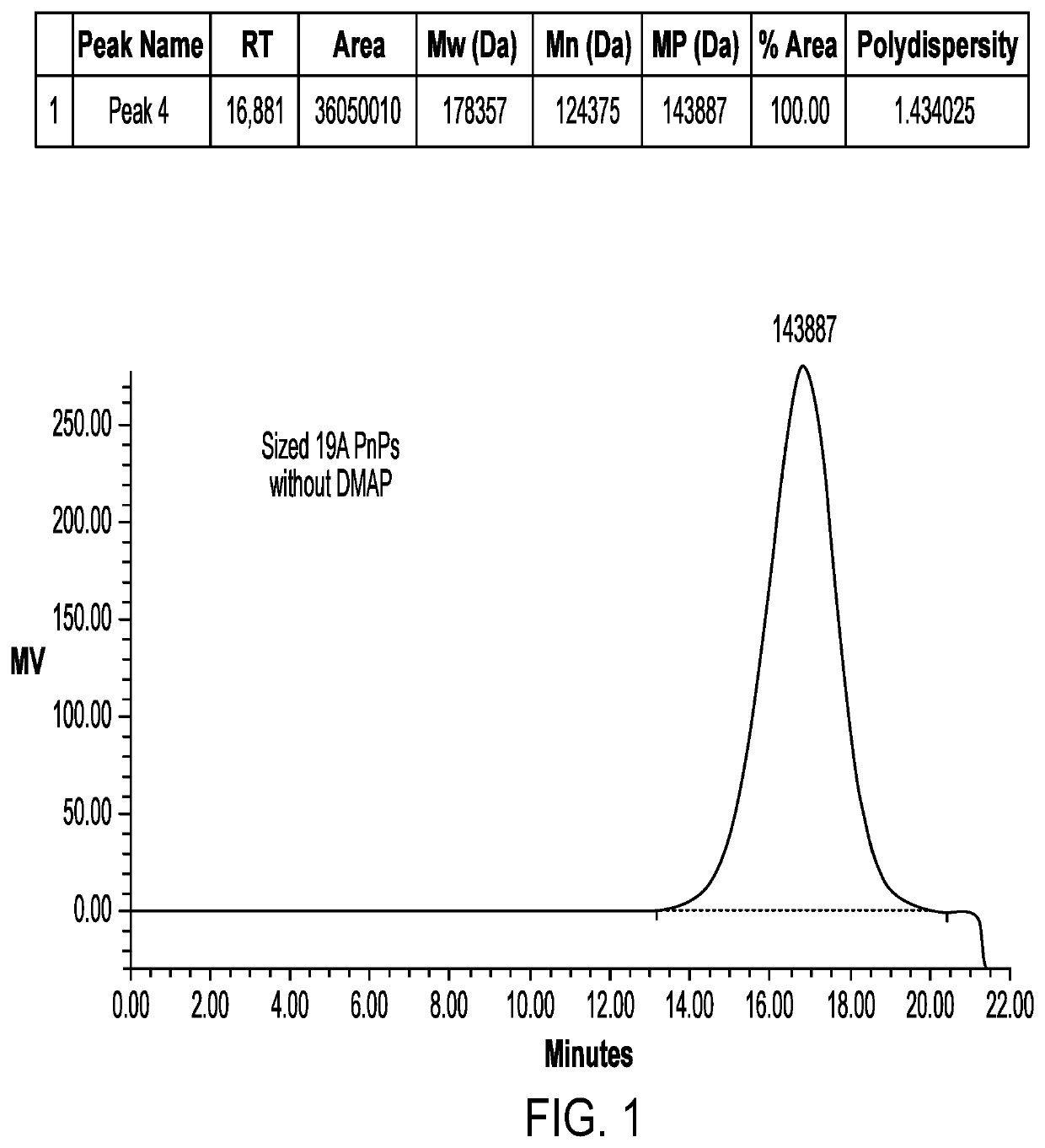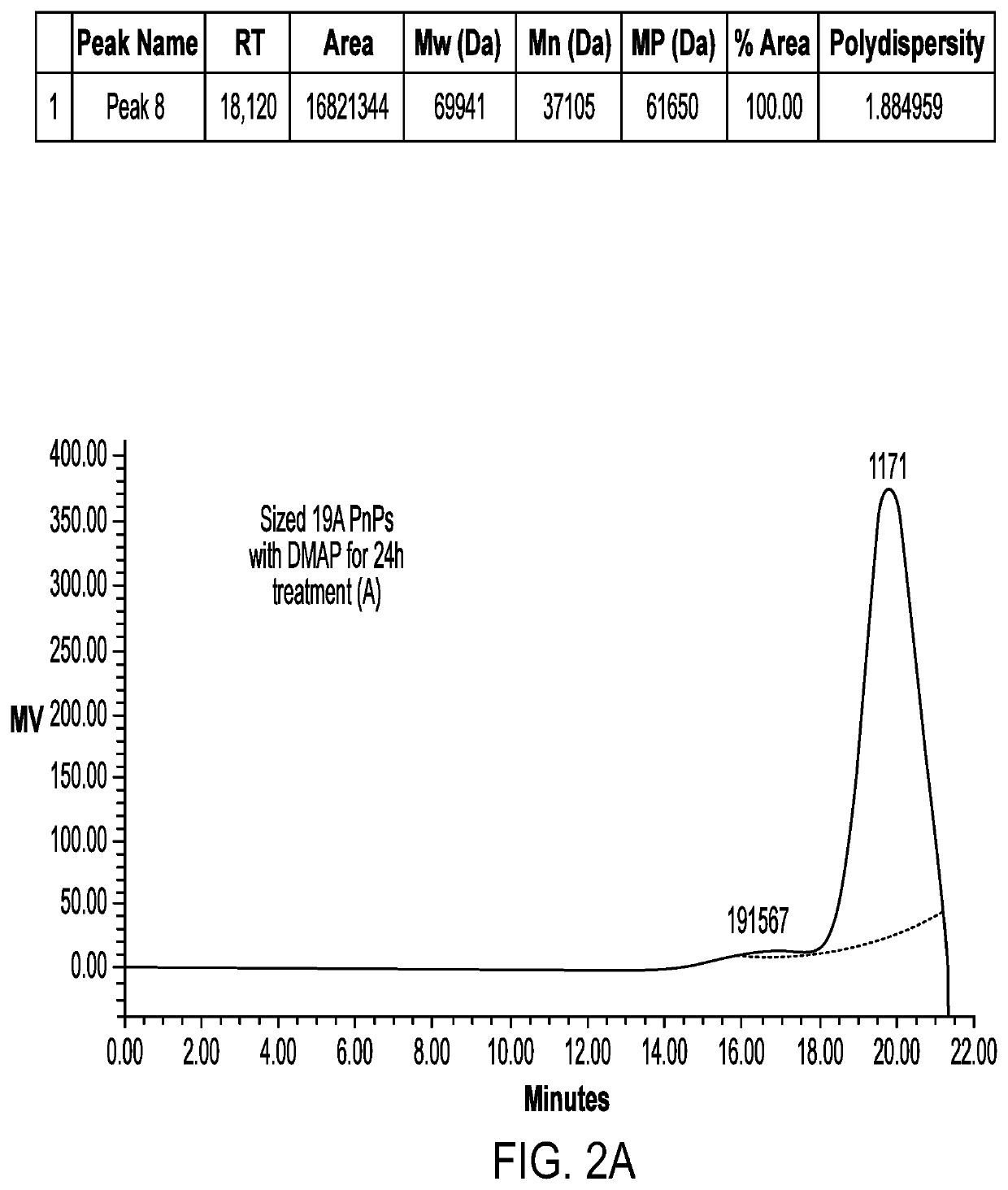Methods for improving the adsorption of polysaccharide-protein conjugates and multivalent vaccine formulation obtained thereof
a polysaccharide and conjugate technology, applied in the field of improving the adsorption of polysaccharideprotein conjugates and multivalent vaccine formulations obtained thereof, can solve the problems of reducing the effective vaccine concentration, the percent adsorption of polysaccharide-protein conjugates may drop further, and the inability to effectively conjugate pneumococcal polysaccharides are difficult to achieve, so as to improve the percent adsorption of individual conjugates, the stability of vaccin
- Summary
- Abstract
- Description
- Claims
- Application Information
AI Technical Summary
Benefits of technology
Problems solved by technology
Method used
Image
Examples
example 1
[0059]Method comprises (a) providing inoculum of a strain of bacteria expressing the CP; (b) cultivating the strain by fermentation at pH 7.2, wherein the rate of feed medium addition is equivalent to the rate of alkali mixture addition for maintaining a preset pH; c) fermenting the culture medium at 35-38° C. under stirring at 50-150 RPM with an air flow rate of 0-0.5 vvm.
example 2
Polysaccharide Purification
[0060]S. Pneumoniae Capsular Polysaccharide Serotype 19F Purification (HIC followed by IEC)
[0061]5 L clarified broth from the fermenter cultures of S. pneumoniae serotype 19F was concentrated and diafiltered to 500 ml using a 100 KDa MWCO membrane. Diafiltration was accomplished using 25 mM sodium phosphate buffer at neutral pH followed by diafiltration with water for injection (WFI).
[0062]Nuclease was added to the polysaccharide solution to achieve a final concentration of 8 U / ml of solution. The enzyme treatment was carried out at 370 C, for 10±2 hrs with stirring.
[0063]Ammonium sulphate was added to the nuclease treated polysaccharide solution to 50% saturation and incubated at 2-8° C. for 12±2 hrs (except serotypes 5 and 4). The mixture was subjected to centrifugation. The pellet (precipitate) was discarded. The solution (˜500 ml) is subjected to 100 kD diafiltration using NaCl followed by chilled WFI. This diafiltered solution containing polysaccharid...
example 3
Polysaccharides
[0072]A homogenizer (Microfluidics) apparatus was used to reduce the molecular weight of the polysaccharide before the activation step. For 19A size reduction was done at 24-28 KPSI, whereas for 19F size reduction was done at 26-30 KPSI wherein the number of passes was about 1 to 3. The sized polysaccharide was diafiltered and concentrated followed by 0.22μ, filtration. The sized polysaccharide was then subjected to HPSEC-RI for estimation of average molecular weight.
PUM
| Property | Measurement | Unit |
|---|---|---|
| pH | aaaaa | aaaaa |
| pH | aaaaa | aaaaa |
| pH | aaaaa | aaaaa |
Abstract
Description
Claims
Application Information
 Login to View More
Login to View More - R&D
- Intellectual Property
- Life Sciences
- Materials
- Tech Scout
- Unparalleled Data Quality
- Higher Quality Content
- 60% Fewer Hallucinations
Browse by: Latest US Patents, China's latest patents, Technical Efficacy Thesaurus, Application Domain, Technology Topic, Popular Technical Reports.
© 2025 PatSnap. All rights reserved.Legal|Privacy policy|Modern Slavery Act Transparency Statement|Sitemap|About US| Contact US: help@patsnap.com



